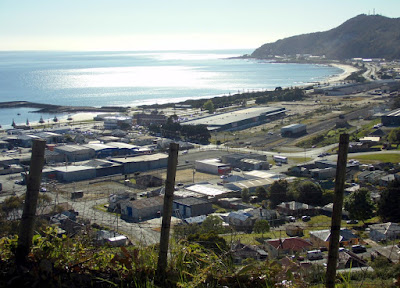After the big storm the other week, which brought down lots of trees and power poles, we were without power for 24 hours. Not bad at all, I thought. They're on top of this.
They replaced the power pole around the corner, and restrung the power lines. But the NBN broadband cable remains stubbornly cut and unconnected. Nobody round here has any proper internet.
I rang our service provider, who told me there wasn't any outage in my area, so it must be me. I told the chap exactly what had happened, but he nevertheless sent an NBN team round to the house a couple of days later to see what was wrong here. I told them exactly what had happened, and they agreed that yes, it probably was the cut cable around the corner. A few days later again, my service provider rang again to tell me there was an outage in the area. I told him too exactly why there was an outage, and that I'd told them all about it a week earlier. He seemed pleased that his job was done. When I asked what the timetable for the repair was, he said it was the NBN's responsibility now, and he didn't know. Wasn't that interested in suspending charges for the non-existent service either.
So a relatively unconnected Christmas, and maybe a relatively unconnected few weeks to come. Sydney Exponential will endeavour to continue its service anyway. Watch this space.
They replaced the power pole around the corner, and restrung the power lines. But the NBN broadband cable remains stubbornly cut and unconnected. Nobody round here has any proper internet.
I rang our service provider, who told me there wasn't any outage in my area, so it must be me. I told the chap exactly what had happened, but he nevertheless sent an NBN team round to the house a couple of days later to see what was wrong here. I told them exactly what had happened, and they agreed that yes, it probably was the cut cable around the corner. A few days later again, my service provider rang again to tell me there was an outage in the area. I told him too exactly why there was an outage, and that I'd told them all about it a week earlier. He seemed pleased that his job was done. When I asked what the timetable for the repair was, he said it was the NBN's responsibility now, and he didn't know. Wasn't that interested in suspending charges for the non-existent service either.
So a relatively unconnected Christmas, and maybe a relatively unconnected few weeks to come. Sydney Exponential will endeavour to continue its service anyway. Watch this space.


















































